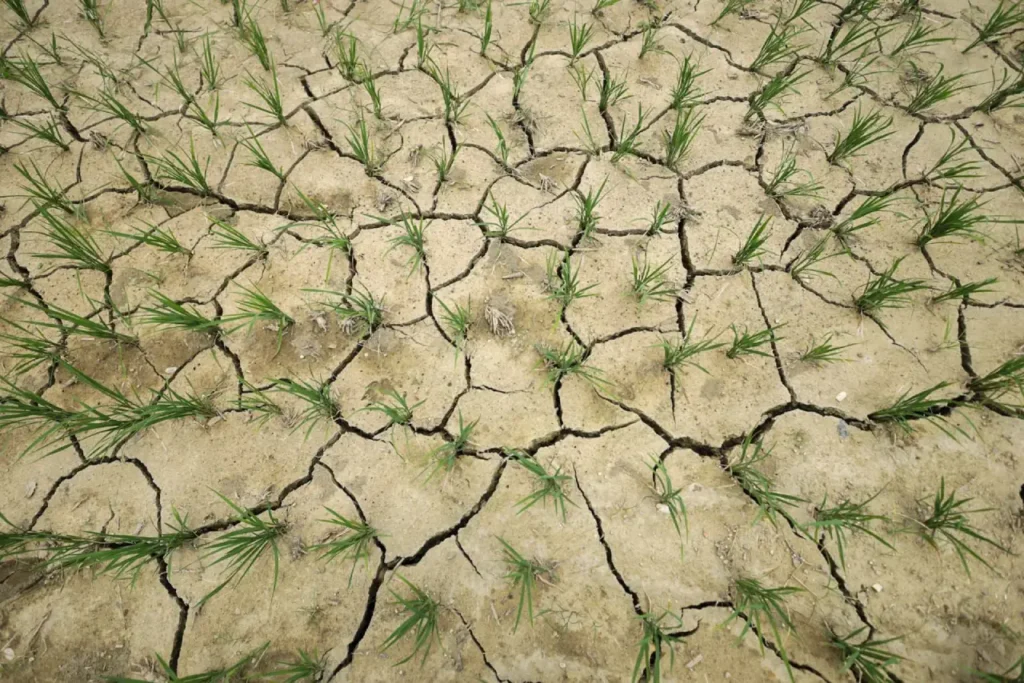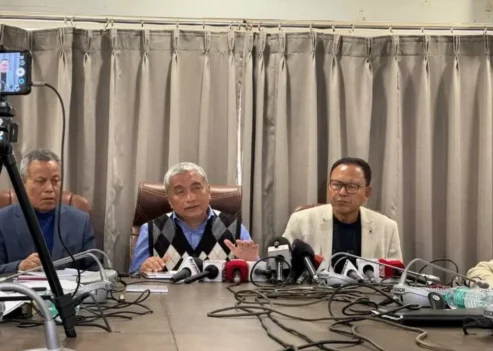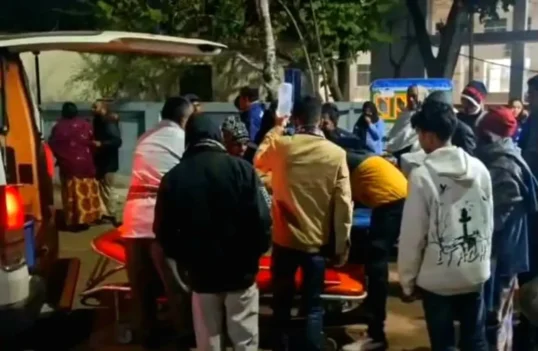In a historic but sobering move, the Government of Nepal declared all eight districts of the country’s Madhesh Province a “disaster crisis zone” on July 22, following a prolonged drought. The decision, made through an emergency meeting of the federal Council of Ministers and based on the recommendation of Home Minister Ramesh Lekhak, reflected the gravity of the situation in the country’s agrarian heartland. A long dry spell of over six months had not only affected irrigation but agriculture as a whole and drinking water. However, despite the severity of the crisis and the official recognition of its calamitous impact, meaningful response and mitigation measures from the federal and provincial governments were woefully lacking.
Out of the total land area of 950,000 hectares of Nepal’s Madhesh Province, approximately 600,000 hectares is cultivable and is utilized primarily to grow rice, a staple food in Nepal. Hence, the province is rightly dubbed “Nepal’s food basket”. Now the monsoon is finally active and the province is receiving rain – more than needed for that matter.
However, just about 10-11 days ago, the province was grappling with the dual threats of a collapsing irrigation system and a vanishing drinking water supply. It is finally raining now and the authorities might put the recent severe drought in Madhesh on the back burner until it boils over again! However, the recent severe drought in Madhesh should not be an “out of sight, out of mind” case. In fact, it’s high time Nepal seriously explored the why, how, and what next of the Madhesh drought crisis.
This was one of the worst dry spells in recent memory faced by Madhesh Province, nestled in Nepal’s southern plains. For six long months, most importantly for more than a month and a half after the official onset of the monsoon, the province received almost no rainfall. Until two weeks ago, less than half of rice plantation was completed in the province, according to the Department of Agriculture.
In many places, rice saplings had either dried up or failed to take root due to the absence of water. The earth had developed cracks. Wells, tube wells, and even deep borings were running dry. This was no ordinary drought. This was a hydrological and infrastructural breakdown, exposing the vulnerabilities of a region where groundwater over-extraction, deforestation in the Chure hills which form the northern edge of Madhesh Province, and the degradation of traditional irrigation canals converged to create a perfect storm.
The Chure range, or Siwalik Hills, is primarily a jungle zone and is most important in sustaining Nepal’s plains ecological balance. The Chure area receives, on average, higher amounts of rains than the plains below and has permeable geology and soil that naturally facilitate infiltrations from rains, which run into the aquifers beneath. It is also, therefore, a very important region providing both groundwater and surface supplies to downstream areas.
The Madhesh Province government declared the region drought-affected on July 10. Following the Disaster Risk Reduction and Management Act, 2074 BS (2017), the provincial government formally recommended to the federal government to declare the province a disaster-hit zone. Accordingly, all eight districts of the province were declared a “disaster crisis zone” on July 22 for a three-month period, with the possibility of extension.
A humanitarian crisis
The drought crisis in Madhesh is not only about crops. It is about survival. In most districts of the province, those families that used to rely on tube wells were now forced to use water tankers, because hand-pumps had run dry. Municipal cities like Birgunj started supplying water with fire engines and rented tankers from other departments.
In addition, long-neglected irrigation projects, such as the Bagmati and Gandak canals, failed when they were needed. Surface irrigation became well-nigh nonexistent in much of the area, while bore wells and shallow tube-wells could no longer be relied upon due to falling groundwater levels.
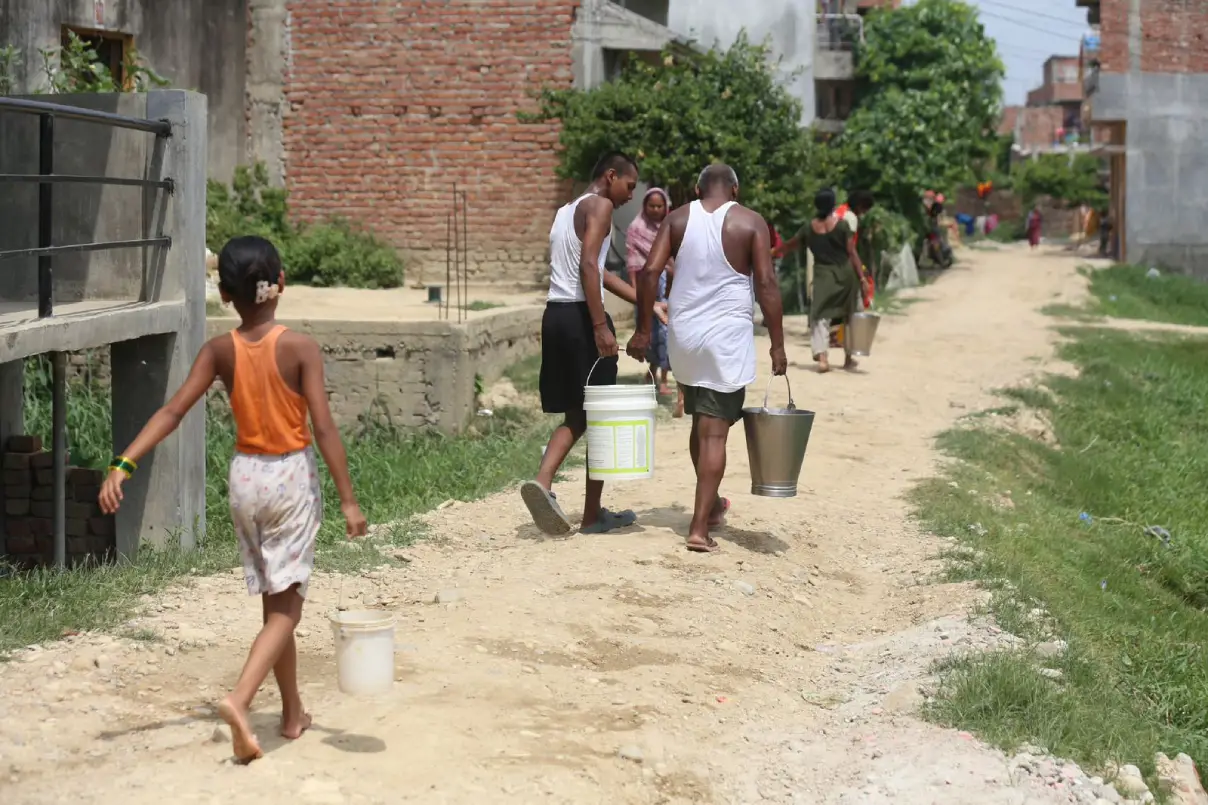
Farmers of Nepal’s Terai-Madhesh were clearly staring at catastrophic yield losses. For an overwhelming majority of farmers in Nepal, farming is not only an occupation but also a lifeline. The prospect of lost harvests means lost income, mounting debt, and possible migration. In an alarming trend, several farmers lost their lives after being electrocuted while using electric pumps for emergency irrigation – a desperate and dangerous workaround born of state inaction.
Hollow declarations, shallow responses
Both the provincial and federal governments were slow, reactive, and uncoordinated in their response. The Madhesh government deployed 15 tankers for drinking water distribution and issued orders to the Ministry of Energy, Irrigation and Drinking Water to dig new borings. Beyond this, there was no visible relief package, no emergency cash transfers, no provision of subsidized seeds or alternative crops, and no major mobilization of disaster relief forces.
The central government, too, did very little to tackle the grave situation. Following an aerial inspection of the drought-hit region by Prime Minister KP Sharma Oli, two study teams were dispatched but no relief materials, budget, or action plans. Clearly, a declaration without a relief package is meaningless. Some lawmakers publicly criticized the government’s “spectator-like” role and called for emergency drinking water supply and reallocation of budget to address the crisis.
Structural causes: beyond the rain
The recent drought in Madhesh was not solely a natural disaster. It’s a man-made crisis, decades in the making. There are two principal causes behind the unprecedented crisis in Nepal’s Madhesh Province.
One, the province received far less rainfall this monsoon season than expected until a week or so ago. Government agencies had forecast excessive rainfall across Nepal, but instead, Madhesh and the southern Terai plains remained unusually dry. Climate change has apparently made weather patterns more erratic and unpredictable.
Two, ground water levels have dropped considerably, one of the province’s largest sources of irrigation water and drinking water. The country has been losing sub-surface resources of water slowly year after year because of many different factors accumulating to this, most significantly the degradation of the Chure hills.
Nevertheless, the past two decades have seen deforestation and large-scale infrastructural development – primarily construction of roads and human settlements – decimate the Chure ecosystem. Illegal and legal large scale extractions, from the area, of its gravels, sand, and stones, is one of the most damaging practices in the area. The practices have halted natural seepage and aquifer recharge, and the recent dryness that Madhesh has experienced is therefore a direct consequence.
Existing surface irrigation canals like Bagmati, Gandak, Koshi, and Kamala are not utilized or their coverage is low. Experts argue that the focus on bore wells rather than maintaining or upgrading surface canals is a policy failure that now threatens regional food security.
Global warming certainly made the drought worse. Shifts in rainfall patterns, extended dry periods, more intense but shorter rainfalls, and warmer temperatures have rendered conventional farming calendars useless.
The road not taken
The environmental degradation caused by indiscriminate mining in Chure has been a long-reality in Nepal. There were heated street and parliamentary discussions when the government proposed the export of sand, gravel and stones from the Chure region as a source of revenue. The local governments have also been guilty, often encouraging extraction to boost their revenues.
In 2009, Nepal’s first President Dr. Ram Baran Yadav, a native of Madhesh, inaugurated the President Chure Conservation Programme. This led to the establishment of the President Chure-Terai Madhesh Conservation Development Committee in 2014, which then developed a comprehensive Chure Conservation Master Plan. Initially, this initiative had raised hopes for reversing the environmental degradation. Unfortunately, the momentum later lost steam, and the degradation-causing activities resumed. A well-entrenched nexus of greedy contractors and corrupt politicians has been largely blamed for derailing conservation efforts.
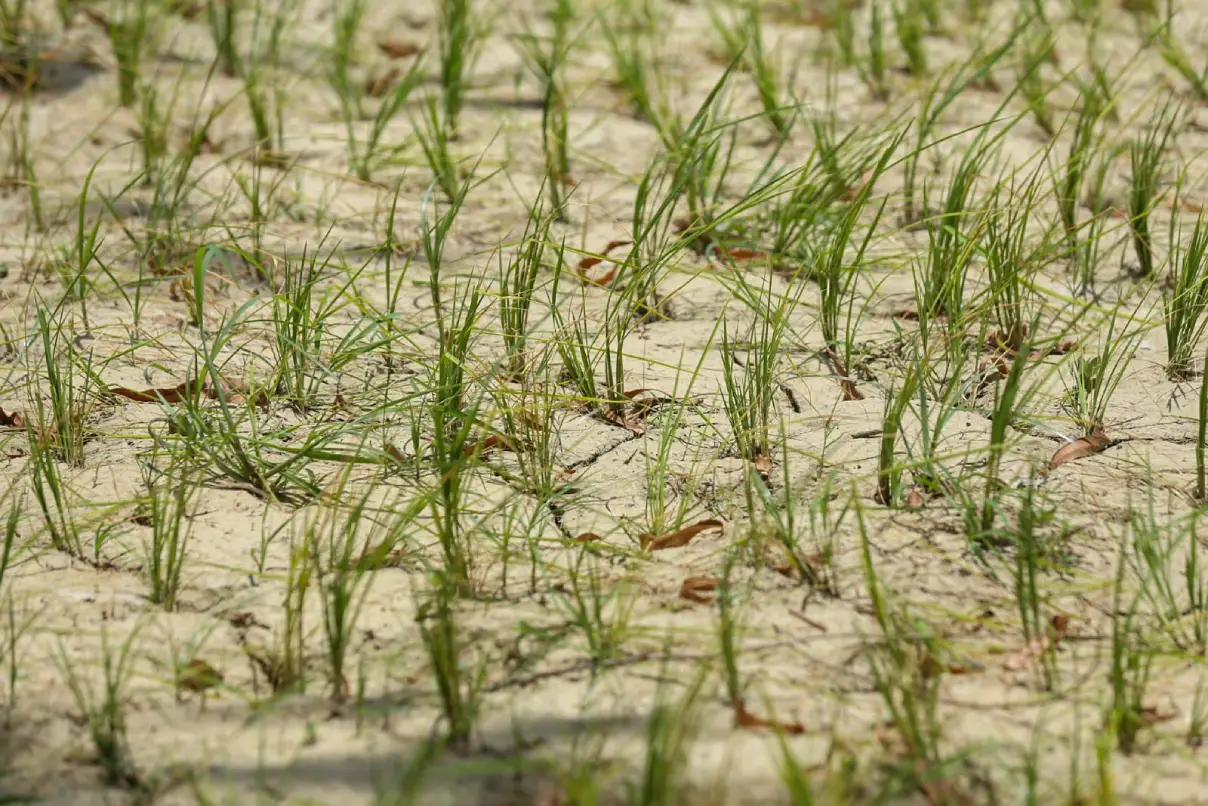
Nepal’s disaster management legislation gives the government the mandate to make tough decisions during disasters. Yet, apart from token announcements, the government did literally nothing. For example, the government never announced an ‘emergency relief package’ which meant there were no cash-for-work or food-for-work scheme, and no subsidy on drinking water or farming inputs. Farmers who lost crops or invested in now-worthless saplings were not provided any type of compensation or insurance benefit. Similarly, the three levels of government (federal, provincial, and municipal) seemed unconnected, with very little coordination.
Short- and long-term measures
In the short term, the government appears to have chosen to drill deep bore wells as a quick fix to ease water shortages in Madhesh. However, many environmental experts have questioned this approach. Since underground aquifers are already significantly depleted, it is questionable how effective these bore wells will be. Even if they manage to draw out some water, the action may further lower the groundwater table, making things even direr in the future. This strategy may ultimately backfire. There is a growing need to reassess the region’s model of agricultural development.
Medium-term measures to tackle a similar situation in the future must include revival of surface irrigation. Traditional canal systems like the Bagmati and Kamala can be renovated and upgraded. Individuals need to be included in water management so that water is distributed efficiently and fairly. Another step is to reforest the Chure region. A “Green Chure” program can help protect and restore forests. Healthy forests will improve water storage and recharge in the long run.
Most importantly, agriculture must be rendered climate-resilient. Farmers must be encouraged to sow drought-resistant seeds and follow new planting calendars. Mechanized farming can also help reduce losses. A disaster preparedness fund should be created. The province needs a ready-to-deploy response unit. Relief materials should be stored in advance for quick delivery.
Water use zoning should be introduced. Areas can be classified based on water availability. This will help plan development without putting too much pressure on ecosystems. Decisions should be based on data. Weather stations, soil moisture sensors, and groundwater sensors need to be deployed. This would provide real-time information for action.
The complete and permanent solution to Madhesh’s drought condition is to stop the exploitation of the Chure hills and start ecological rehabilitation. If the government is serious and committed, it can put an end to the horrific extraction practices right now. Restoring the ecological health of the region will need coordinated effort and time, though.
Way Forward
It’s clear that global warming is to blame for a large portion of the crisis today—and it will only worsen in years to come. Countries that are the largest emitters of global warming must also be held accountable and do their part in bringing the fallout to an end. In the meantime, Nepal must also deal with its own internal causes of climate deterioration. This will enhance its position on the global stage within the battle of climate justice.
The declaration of Madhesh as a disaster-ravaged region can’t be the end but the beginning of meaningful action. This crisis laid bare the necessity to reconsider Nepal’s agriculture, water management, and disaster preparedness policy. At the cost of the food basket, the interest is national rather than regional. The government must react with the seriousness and immediacy that the crisis demands.
Nepal has experienced glacial lake outbursts, floods, earthquakes, and now droughts. Each time, we declare, we debate, we delay—and we forget. If lessons are not learned now, Madhesh may not remain Nepal’s breadbasket for longer.
The people of Madhesh have waited long enough. Let’s hope the Nepal government does more than watch.

